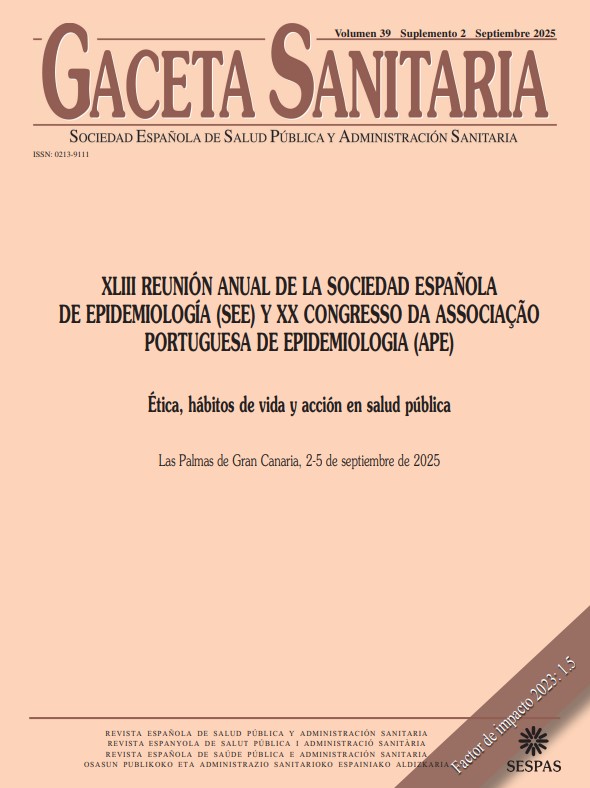145 - LEAD EXPOSURE AND FUNCTIONAL DECLINE IN OLDER ADULTS
CNE-ISCIII; UAM/CIBERESP; UAM/CIBERESP; UGR; CNE-ISCIII/CIBERESP; CNE-ISCIII/CIBERESP; CIEMAT; COLUMBIA UNIVERSITY; CNE-ISCIII/CIBERESP.
Background/Objectives: Our research group has provided evidence in humans suggesting a relationship between heavy metal exposure and functional decline in older adults. However, the effects of lead (Pb) on functional health remain understudied. The present study aims to assess the association between Pb exposure –measured in whole blood and serum– and functional health in older adults, including muscle mass, grip strength, and gait performance.
Methods: Data from 9,006 adults aged #1 60 years from the general Spanish and U.S. populations, participants in the Seniors-ENRICA II(SEN-II), NHANES III, and NHANES2011-2014 studies, were analyzed. Grip strength was measured using a dynamometer, with weakness defined as the lowest sex- and BMI-adjusted quintile. Appendicular muscle mass was estimated using the Scafoglieri formula, normalized by BMI. The Short Physical Performance Battery was used to identify lower limb dysfunction (score < 9), and gait speed assessed over a 2.4-meter distance. Pb levels in whole blood and serum were measured using mass spectrometry. In SEN-II, residential addresses were geocoded, and Pb exposure was estimated using geospatial sources and CHIMERE air quality models. The association between Pb levels and health parameters was assessed using linear and logistic regression models adjusted for potential confounders, and study results pooled using random-effects meta-analysis.
Results: The median (interquartile range, IQR) Pb levels in whole blood were 25.5 [25.1-26.0], 15.3 [14.9-15.7], and 38.4 [37.6-39.1] μg/L across the three studies, while in serum (SEN-II), levels were 5.05 [4.94-5.17] μg/L. In SEN-II, residential exposure to Pb-emitting industries, modeled air Pb levels, and proximity to roads explained 3% and 10% of the variability in blood and serum Pb levels, respectively. Meta-analysis results showed that an increase in blood Pb IQR was associated with a decrease of -0.79 kg (-1.15,-0.43) in muscle mass, -0.93 kg/ALMBMI (-1.81,-0.05) in relative strength, an increase in odds of grip weakness (1.33 [1.02,1.64]), and a 1% (-0.09,3.63) increase in time to walk 2.4 meters. In SEN-II, an increase in serum Pb was associated with a reduction of -0.11 kg in strength, a 1.15% (0.11,2.20) increase in gait speed, a higher prevalence of grip weakness (OR: 1.68 [1.12,2.52]), and lower limb dysfunction (OR: 1.14 [1.03,1.27]).
Conclusions/Recommendations: Our findings suggest that environmental Pb exposure in older adults may contribute to functional decline and increase the risk of frailty with ageing. These associations underscore the need for strategies to reduce lead exposure and mitigate its impact on functional health in later life.















